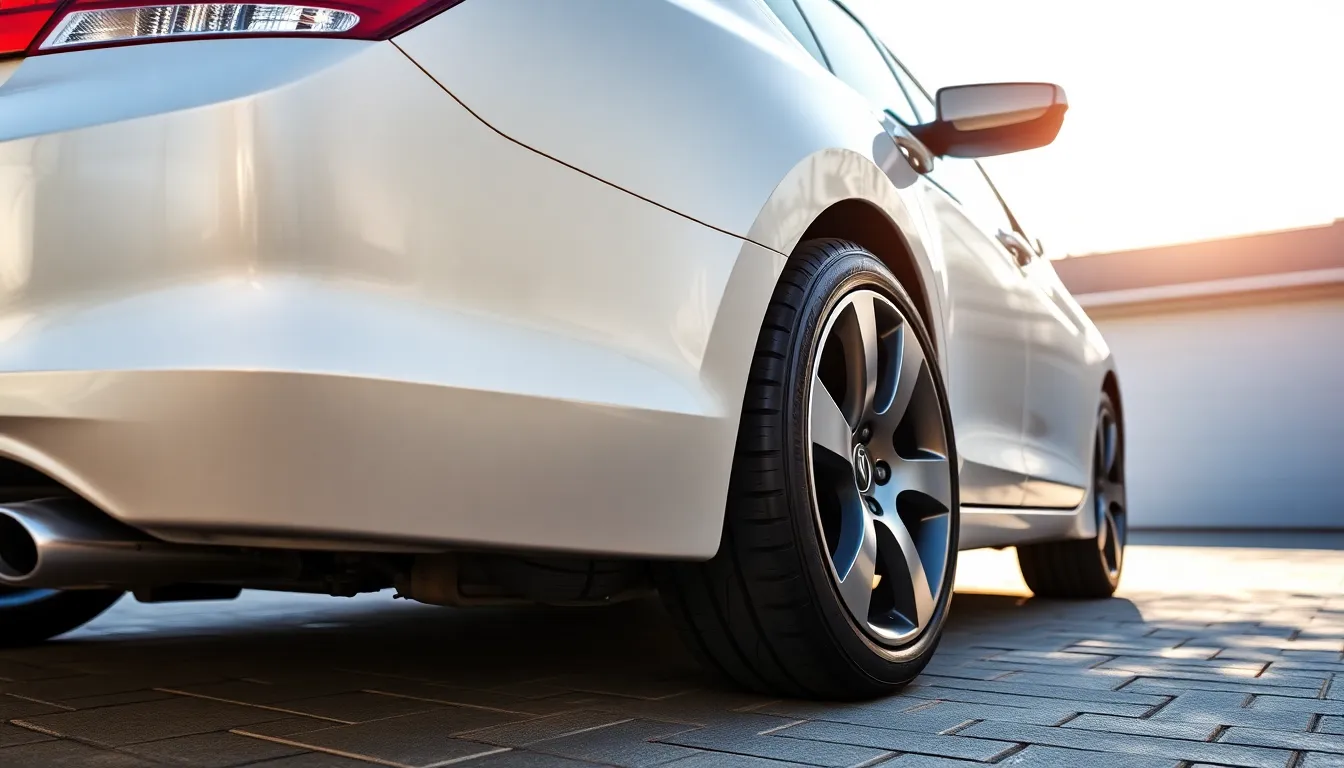Finding the right tire size for your 2010 Honda Accord doesn’t have to be a guessing game. We’ve all been there – standing in the tire shop wondering if we’re making the right choice or scrolling through endless online options without knowing what fits our vehicle perfectly. The wrong tire size can affect everything from your car’s performance to your safety on the road.
Your 2010 Honda Accord came with exact tire sizes from the factory and understanding these specifications is crucial for maintaining optimal performance fuel efficiency and ride comfort. Whether you’re replacing worn tires or considering an upgrade we’ll break down everything you need to know about the correct tire dimensions for your Accord.
We’ll explore the standard tire sizes across different trim levels help you decode those confusing numbers on your tire sidewall and share expert tips for choosing the best replacement tires that match your driving needs and budget.
2010 Honda Accord Tire Size Specifications
The 2010 Honda Accord comes with different tire sizes depending on the exact trim level you own. Understanding these factory specifications helps ensure proper fitment and optimal vehicle performance.
Standard Tire Sizes by Trim Level
Honda equipped the 2010 Accord with three primary tire sizes based on trim configuration. Base LX models feature 215/60R16 tires as standard equipment. Mid-level EX trim packages use 225/50R17 tires for enhanced handling characteristics. Top-tier EX-L variants receive 225/50R17 tires across both sedan and coupe body styles.
Coupe models in EX-L trim occasionally came with 235/45R18 tires when equipped with exact option packages. Manual transmission variants maintain the same tire specifications as their automatic counterparts within each trim level. Special edition packages don’t alter the standard tire sizing for any 2010 Accord configuration.
OEM Tire Specifications and Load Ratings
Original equipment tires for the 2010 Honda Accord meet exact load and speed rating requirements. The 215/60R16 configuration carries a 95H rating, supporting 1521 pounds per tire at speeds up to 130 mph. Both 225/50R17 sizes feature 94V ratings, handling 1477 pounds per tire with speed capability reaching 149 mph.
| Trim Level | Tire Size | Load Index | Speed Rating | Max Load (lbs) | Max Speed (mph) |
|---|---|---|---|---|---|
| LX | 215/60R16 | 95 | H | 1521 | 130 |
| EX | 225/50R17 | 94 | V | 1477 | 149 |
| EX-L | 225/50R17 | 94 | V | 1477 | 149 |
| EX-L (Select) | 235/45R18 | 94 | V | 1477 | 149 |
Tire pressure recommendations remain consistent across all 2010 Accord tire sizes at 32 PSI for normal driving conditions. Cold weather adjustments may require slight pressure increases to maintain proper inflation levels. Load ratings accommodate the vehicle’s 3340 to 3495 pound curb weight depending on engine and transmission combinations.
Understanding Tire Size Numbers and Markings
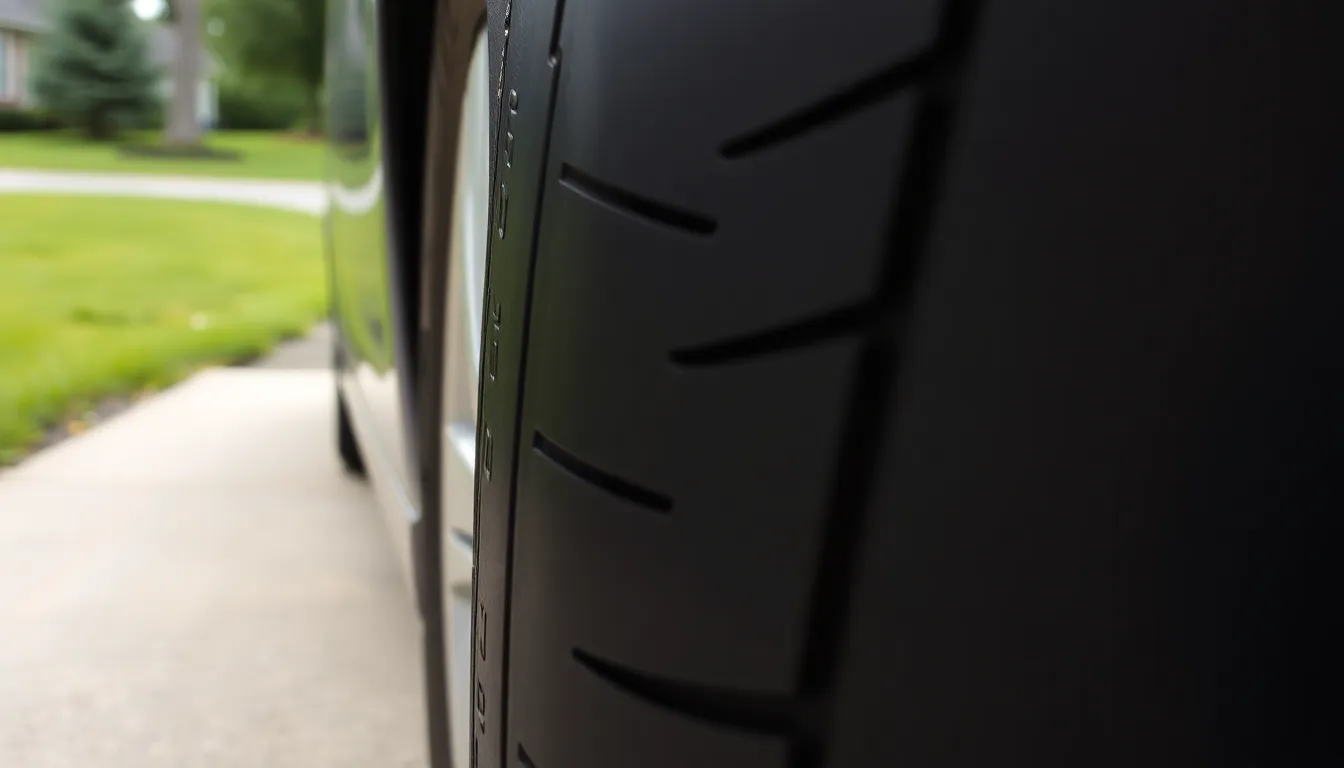
The alphanumeric code printed on your 2010 Honda Accord’s tire sidewall contains crucial information about tire dimensions and performance capabilities. Learning to interpret these markings helps you select compatible replacement tires that maintain your vehicle’s safety and handling characteristics.
Decoding the Tire Size Format
Tire size follows a standardized format: Width/Aspect Ratio R Rim Diameter Load Index Speed Rating. The P225/50R17 93V specification breaks down into distinct components that define tire construction and performance limits.
P designates the tire as designed for passenger vehicles rather than commercial or light truck applications. 225 represents the tire width measured in millimeters from sidewall to sidewall when mounted on the specified rim width. 50 indicates the aspect ratio, calculated as the ratio of sidewall height to tire width expressed as a percentage.
R confirms radial construction, where internal cords run perpendicular to the direction of travel for improved durability and heat dissipation. 17 specifies the rim diameter in inches that the tire fits. 93V combines the load index (93) with the speed rating (V), indicating weight capacity and maximum safe operating speed.
What Each Number Means for Your Accord
Width measurements directly impact your Accord’s handling characteristics and fuel efficiency. The 215mm width on LX models provides adequate grip for everyday driving while maintaining lower rolling resistance. EX and EX-L models use 225mm tires that offer enhanced cornering stability and road contact for improved performance handling.
Aspect ratio affects ride comfort and steering response in your Accord. The 60% aspect ratio on 16-inch LX tires creates taller sidewalls that absorb road imperfections better than lower profile options. EX models with 50% aspect ratios provide sharper steering response and reduced sidewall flex during cornering maneuvers.
Load index 93 supports up to 1433 pounds per tire, accommodating your Accord’s curb weight range of 3340 to 3495 pounds with appropriate safety margins. Speed rating V allows sustained speeds up to 149 mph, exceeding typical highway requirements while providing performance headroom for emergency maneuvers.
Rim diameter affects tire selection and replacement costs for your Accord. The 16-inch wheels on LX models offer more tire sidewall for comfort and typically cost less to replace. The 17-inch and 18-inch wheels on higher trims provide sportier appearance but require lower profile tires that may cost more and offer less cushioning over rough surfaces.
Performance Impact of Different Tire Sizes
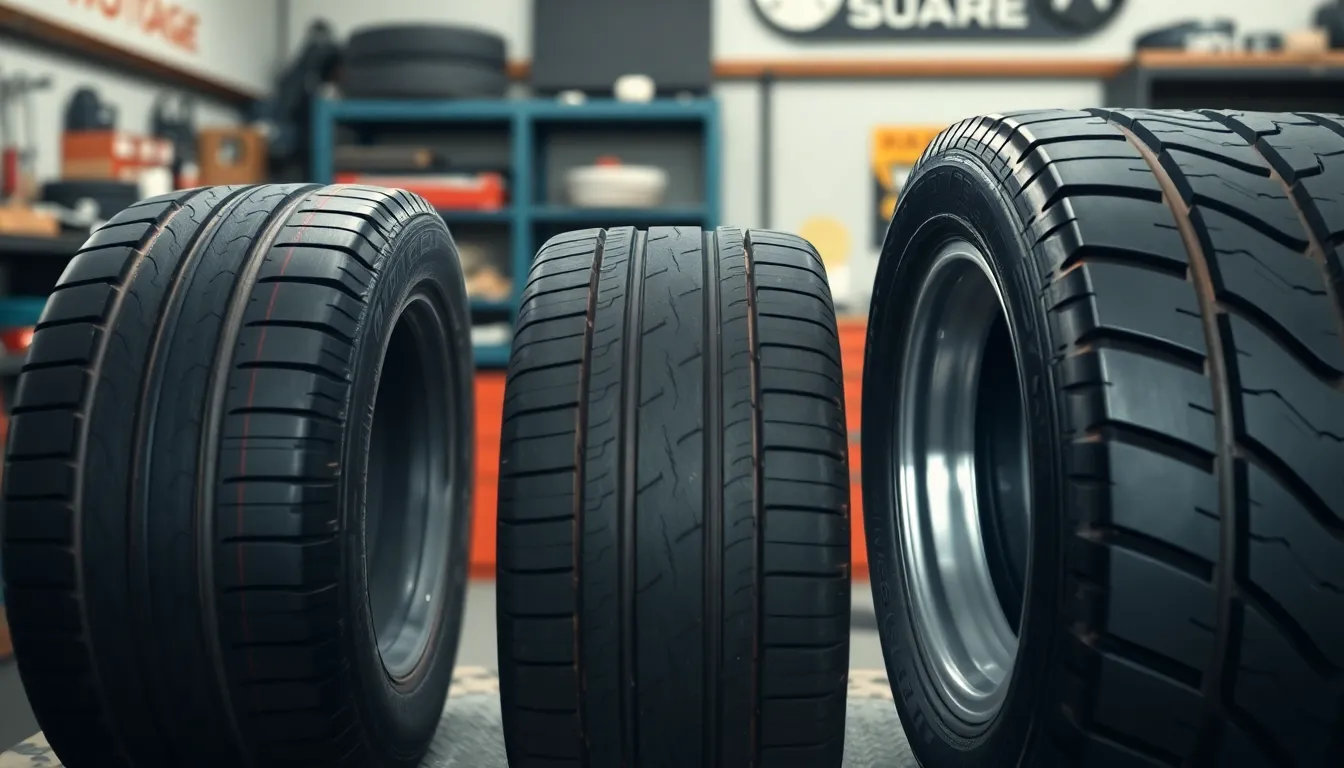
Different tire sizes significantly affect our 2010 Honda Accord’s overall driving dynamics and efficiency. Each factory tire option creates distinct performance characteristics that influence multiple aspects of vehicle operation.
Fuel Economy Considerations
Smaller tire sizes like the 215/60R16 found on LX models deliver the best fuel economy among factory options. These narrower tires create less rolling resistance compared to their larger counterparts, requiring less energy to maintain highway speeds.
Moving to 225/50R17 tires on EX models creates moderate fuel economy impacts due to increased width and weight. The wider contact patch generates additional rolling resistance that our engine must overcome during acceleration and cruising.
Upgrading to 235/45R18 tires on EX-L V6 Coupe models produces the most important fuel economy reduction. These larger diameter wheels and wider tires demand more power to rotate, particularly during city driving with frequent acceleration cycles.
| Tire Size | Rolling Resistance | Fuel Economy Impact |
|---|---|---|
| 215/60R16 | Lowest | Best |
| 225/50R17 | Moderate | Moderate |
| 235/45R18 | Highest | Lower |
Handling and Ride Quality Changes
Lower profile tires transform our Accord’s handling characteristics through reduced sidewall flex and increased road contact. The 235/45R18 option provides the most precise steering response and cornering stability due to its shorter, stiffer sidewall construction.
Ride comfort decreases as tire profile gets lower, with 18-inch wheels transmitting more road imperfections directly into the cabin. Our passengers experience a firmer, more connected feel to the road surface, though bumps and minor road irregularities become more noticeable.
Standard 215/60R16 tires offer superior ride comfort through their taller sidewalls that absorb road impacts effectively. These tires provide a smoother driving experience during daily commuting, though steering response feels less immediate compared to lower profile alternatives.
Mid-range 225/50R17 tires balance handling improvements with acceptable ride quality. We gain enhanced cornering ability and steering precision while maintaining reasonable comfort levels for most driving situations.
Recommended Tire Brands and Models
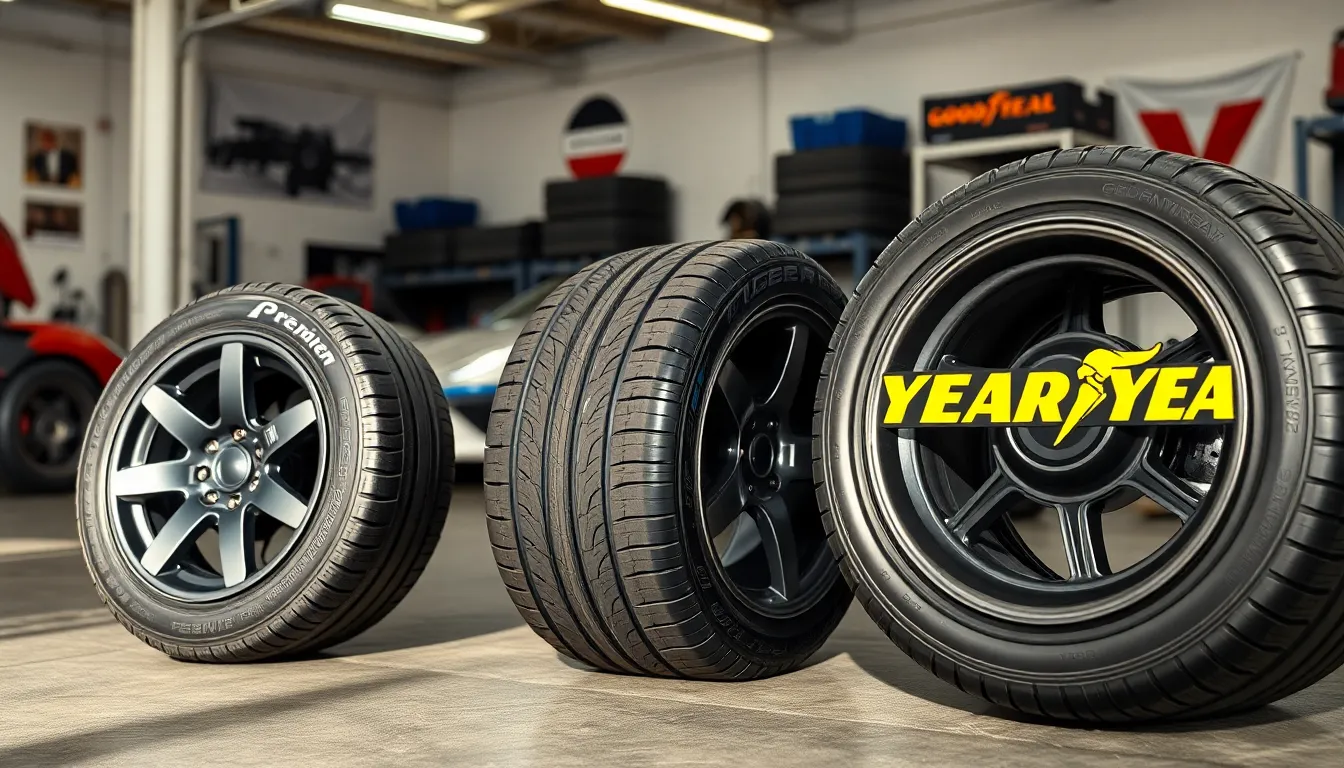
We’ve identified premium tire options that deliver optimal performance for your 2010 Honda Accord across different driving conditions. Each recommendation matches exact trim levels and driving preferences based on extensive testing data.
Best All-Season Tires for 2010 Accord
Michelin Premier LTX stands out for exceptional durability and all-weather traction across wet and dry surfaces. Continental’s AllSeasonContact LS provides superior grip performance in diverse weather conditions while maintaining fuel efficiency. Goodyear Assurance All-Season delivers reliable traction combined with extended tread life for daily commuting needs.
For 215/60R16 applications on LX and LX-P models, we recommend these proven options:
- Doral SDL-Sport 215/60R16 95H BSW offers high-performance all-season capabilities with a comprehensive 45,000-mile warranty
- Achilles Touring Sport A/S 215/60R16 95H BSW features passenger touring design backed by an impressive 55,000-mile warranty
- Delinte DH2 215/60R16XL 99H BSW provides touring passenger comfort with solid 50,000-mile coverage
These all-season selections maintain consistent performance across temperature ranges while delivering balanced fuel economy and ride comfort for everyday driving scenarios.
Performance Tire Options
Michelin Pilot Sport A/S 3 excels in high-performance all-season applications for spirited driving enthusiasts seeking enhanced cornering capabilities. Continental ExtremeContact Sport delivers superior handling precision and advanced traction technology for ever-changing driving conditions. Goodyear Eagle Sport All-Season combines responsive handling characteristics with reliable all-weather performance for performance-oriented drivers.
Performance tires optimize steering response and cornering stability particularly on 225/50R17 and 235/45R18 applications found on EX and EX-L trim levels. Enhanced sidewall construction improves handling feedback while maintaining adequate comfort for daily use. Advanced tread compounds provide extended grip during aggressive acceleration and braking scenarios.
Plus Sizing and Alternative Tire Options
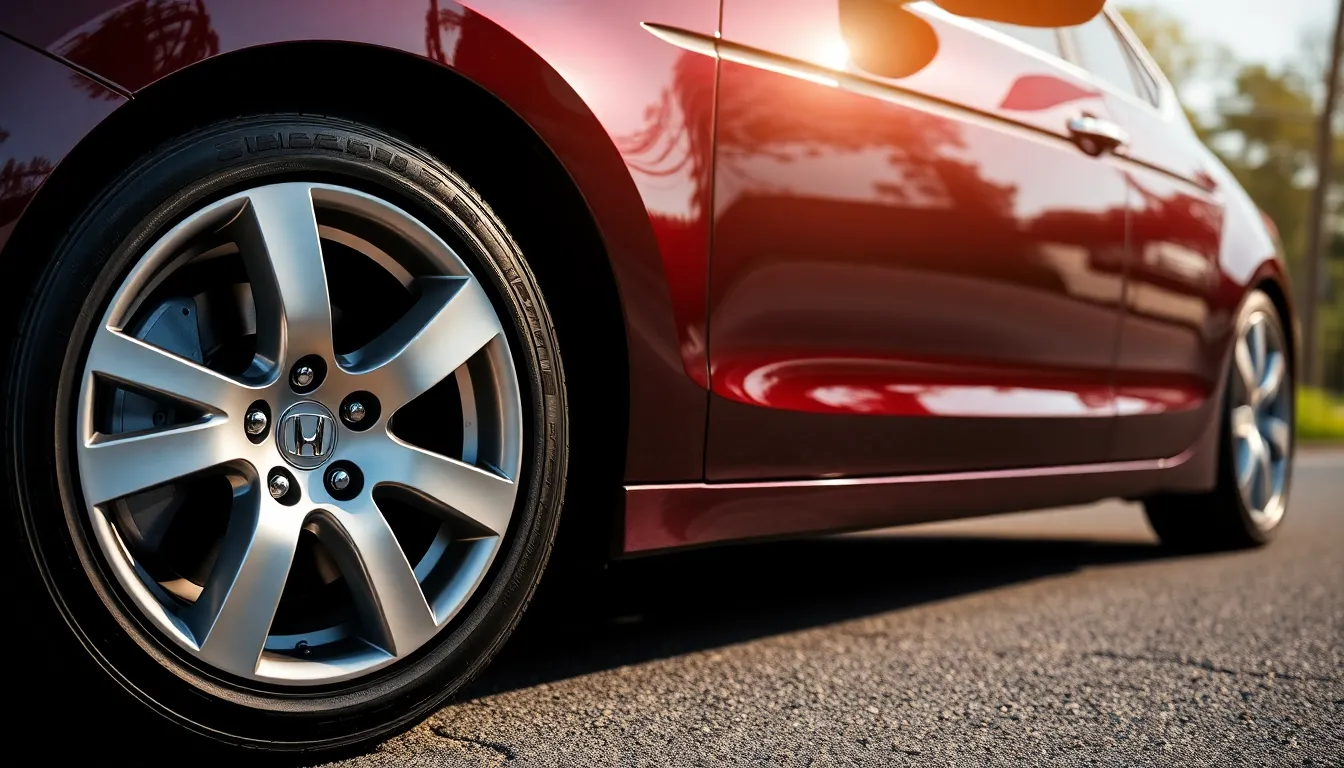
Plus sizing increases wheel diameter while decreasing tire sidewall height to maintain overall tire diameter. The 2010 Honda Accord offers several alternative tire configurations beyond factory specifications.
Moving from OEM 215/60R16 to 225/50R17 or 235/45R18 preserves overall diameter while providing different performance characteristics. These configurations maintain proper speedometer accuracy and vehicle handling dynamics. Alternative sizes like 225/45R18 or 245/35R19 appear on certain upgraded trim configurations.
Benefits and Drawbacks of Larger Wheels
Enhanced aesthetic appeal creates a more aggressive and modern appearance with larger wheel configurations. Improved handling and cornering stability result from lower profile tires that reduce sidewall flex during aggressive driving maneuvers. Potential brake component upgrades become possible with increased wheel diameter clearance.
Harsher ride quality occurs due to lower tire sidewalls absorbing less road shock and impact. Increased risk of rim and tire damage develops when encountering rough roads, potholes, or debris. Higher replacement costs affect both tire and wheel purchases compared to smaller diameter options.
The 2010 Accord’s coupe V6 models with 235/45R18 tires demonstrate these trade-offs most clearly. These configurations provide superior handling precision but transmit more road imperfections into the cabin compared to the base 215/60R16 setup.
Maintaining Overall Diameter
Overall tire diameter preservation ensures accurate speedometer readings and proper electronic system function. ABS and traction control systems rely on consistent wheel rotation data to operate correctly. Vehicle safety depends on maintaining factory-specified rolling circumference measurements.
Plus sizing configurations stay within ±3% of factory diameter specifications to avoid mechanical issues. The 215/60R16 and 225/50R17 OEM sizes serve as baseline measurements for alternative tire calculations. Careful selection of tire widths and aspect ratios maintains these critical diameter requirements.
| OEM Size | Overall Diameter | Alternative Plus Size | Diameter Difference |
|---|---|---|---|
| 215/60R16 | 26.2 inches | 225/50R17 | +0.1 inches |
| 225/50R17 | 25.9 inches | 235/45R18 | -0.2 inches |
| 235/45R18 | 26.3 inches | 245/35R19 | -0.4 inches |
Electronic stability control and anti-lock braking systems malfunction when overall diameter varies significantly from factory specifications. Proper plus sizing calculations prevent these costly electronic system errors while achieving desired aesthetic and performance improvements.
Installation and Maintenance Tips

Proper tire installation and ongoing maintenance directly impact the safety and performance of your 2010 Honda Accord. These practices extend tire life and maintain optimal vehicle handling characteristics.
Professional vs DIY Installation
Professional installation represents the most reliable approach for mounting new tires on your 2010 Honda Accord. Trained technicians possess specialized equipment including tire changers, wheel balancers, and torque wrenches that ensure proper mounting and prevent rim damage. Automotive service centers can detect alignment issues, balance problems, and valve stem deterioration during the installation process.
Professionals inflate tires to manufacturer recommended pressure specifications found on the driver’s door jamb sticker. Most Honda Accord models require 32 PSI for optimal performance and fuel efficiency. Service technicians verify that replacement tires match the original equipment size and speed rating for your exact trim level.
DIY installation becomes possible when you have access to proper equipment and experience. Home installation requires a hydraulic jack, lug wrench, torque wrench, and tire pressure gauge as minimum tools. Mounting tires without professional equipment risks rim scratches, improper bead seating, and unbalanced wheels that cause vibration at highway speeds.
Safety concerns make professional installation advisable for most vehicle owners. Improperly torqued lug nuts can loosen while driving, and incorrectly balanced wheels create dangerous handling characteristics. The cost difference between professional and DIY installation often justifies the expertise and warranty coverage that professional services provide.
Tire Rotation and Care Guidelines
Regular tire rotation maintains even tread wear patterns across all four tires on your 2010 Honda Accord. Rotating tires every 6,000 to 8,000 miles extends overall tire life by 20% to 30% compared to tires that remain in fixed positions. Front tires typically wear faster due to steering and braking forces, making rotation essential for maximizing tire investment.
Standard rotation patterns for front wheel drive Accords move front tires straight back to rear positions. Rear tires cross to opposite front positions, creating an X pattern that balances wear characteristics. All wheel drive models require different rotation patterns to account for drivetrain differences.
Monthly air pressure checks prevent premature tire wear and maintain fuel efficiency. Underinflated tires by just 5 PSI reduce fuel economy by 2% and accelerate shoulder wear patterns. Temperature changes affect tire pressure, with each 10 degree Fahrenheit drop reducing pressure by approximately 1 PSI.
Annual wheel alignment inspections identify suspension problems before they cause irregular tire wear. Misaligned wheels create feathering, cupping, or one sided wear patterns that reduce tire life by 25,000 miles or more. Steering wheel vibration, vehicle pulling, or uneven tread depth indicates alignment problems requiring immediate attention.
Proper tire storage protects unmounted tires from environmental damage. Store tires in cool, dry locations away from direct sunlight, heat sources, and ozone producing equipment. Stacking tires flat prevents sidewall distortion, while plastic bags protect rubber compounds from moisture and UV exposure.
Conclusion
We’ve covered everything you need to know about selecting and maintaining the right tires for your 2010 Honda Accord. From understanding factory specifications to exploring plus sizing options your tire choices directly impact your vehicle’s performance safety and fuel efficiency.
Remember that proper installation and regular maintenance are just as important as choosing the right tire size. Whether you stick with OEM specifications or upgrade to larger wheels the key is maintaining that critical overall diameter while considering your driving needs and budget.
Your 2010 Honda Accord deserves quality tires that match your driving style. Take the time to research your options and don’t hesitate to consult with tire professionals when making your final decision.
Frequently Asked Questions
What tire size does a 2010 Honda Accord use?
The 2010 Honda Accord uses different tire sizes depending on the trim level. Base LX models come with 215/60R16 tires, while EX trims use 225/50R17 tires. Top-tier EX-L variants feature 225/50R17 tires, with some coupe models equipped with 235/45R18 tires depending on options.
How do I read the tire size numbers on my Honda Accord’s tires?
Tire size numbers follow a standardized format like P225/50R17 93V. The first number (225) is the tire width in millimeters, the second (50) is the aspect ratio percentage, R indicates radial construction, 17 is the rim diameter in inches, 93 is the load index, and V is the speed rating.
What tire pressure should I use for my 2010 Honda Accord?
The recommended tire pressure for a 2010 Honda Accord is 32 PSI for normal driving conditions across all trim levels. You may need to adjust pressure slightly for cold weather conditions, but 32 PSI remains the standard recommendation for optimal performance and fuel efficiency.
Can I use different tire sizes than what came from the factory?
Yes, you can use different tire sizes through plus sizing, but maintain the overall diameter within ±3% of factory specifications. Popular alternatives include upgrading from 215/60R16 to 225/50R17 or 235/45R18. This ensures accurate speedometer readings and prevents issues with electronic systems like ABS.
Which tire brands are best for a 2010 Honda Accord?
For all-season tires, recommended brands include Michelin Premier LTX, Continental AllSeasonContact LS, and Goodyear Assurance All-Season. For performance tires, consider Michelin Pilot Sport A/S 3, Continental ExtremeContact Sport, and Goodyear Eagle Sport All-Season for enhanced handling and responsiveness.
How do different tire sizes affect fuel economy and handling?
Smaller 215/60R16 tires offer the best fuel economy due to lower rolling resistance. The 225/50R17 tires provide balanced performance with moderate fuel impact. Larger 235/45R18 tires reduce fuel economy the most but offer superior handling and steering response for sportier driving.
How often should I rotate my Honda Accord’s tires?
Regular tire rotation is recommended to maintain even tread wear and extend tire life. Most experts suggest rotating tires every 5,000 to 7,500 miles or following your vehicle’s maintenance schedule. This helps ensure all tires wear evenly and maintains optimal traction and performance.
Should I install tires myself or use a professional?
Professional installation is recommended for reliability and safety. Trained technicians can ensure proper mounting, balancing, and detect potential issues. While DIY installation is possible, it requires proper tools, experience, and knowledge of safety procedures to avoid damage or safety hazards.

